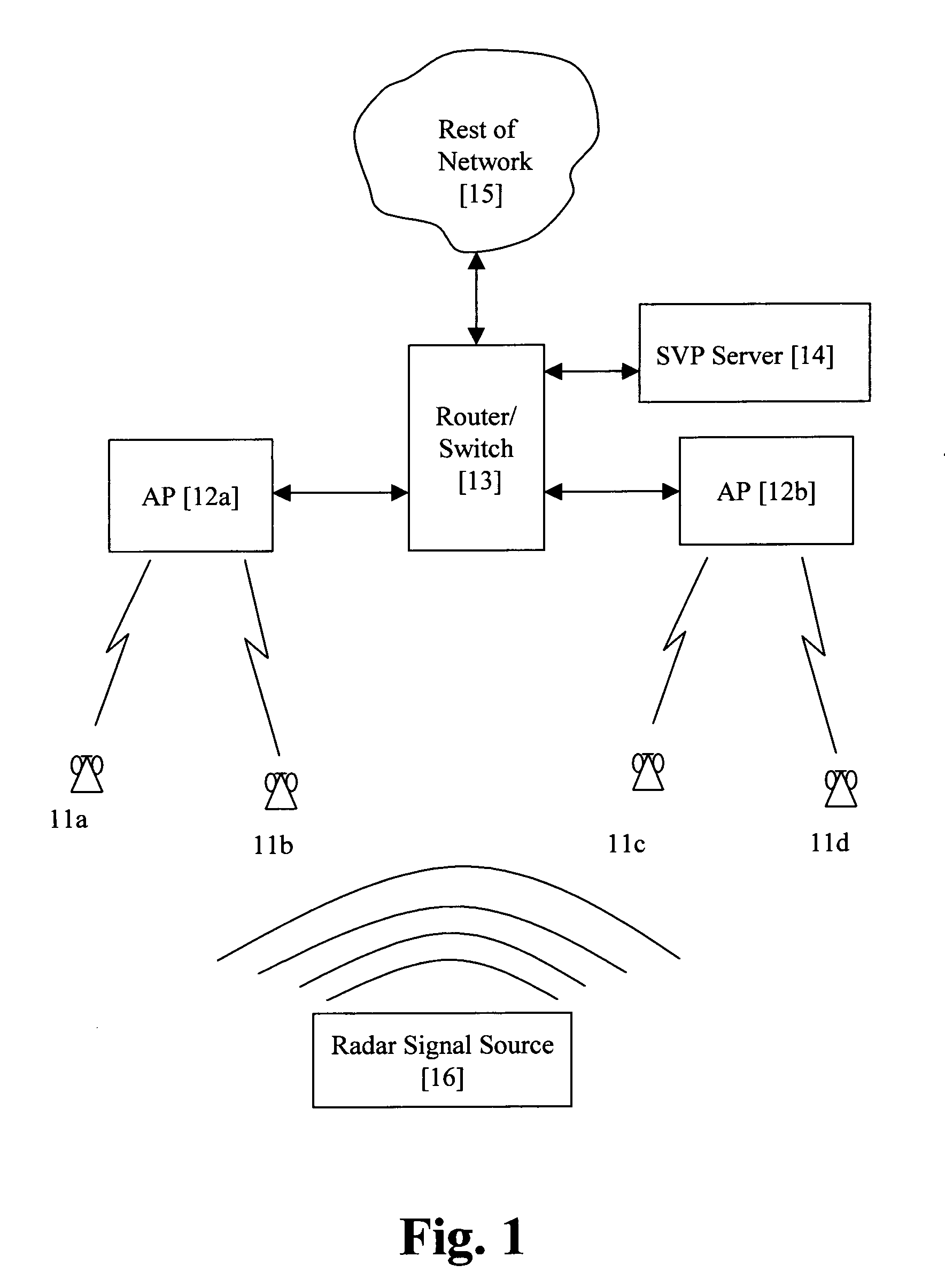Method for determining DFS channel availability in a wireless LAN
a wireless lan and channel availability technology, applied in the field of wireless communication technology, can solve the problems of inability to send such probes in the 802.11a environment, inability to allow slave devices, and inability to maintain the continuity of a communications session between an ap and an associated wireless communication devi
- Summary
- Abstract
- Description
- Claims
- Application Information
AI Technical Summary
Benefits of technology
Problems solved by technology
Method used
Image
Examples
Embodiment Construction
[0019]We request that the entire contents of U.S. Pat. Nos. 5,673,307 and 6,496,499, which are commonly assigned to the SpectraLink Corporation of Boulder, Colo., be incorporated in their entirety into this application by reference. FIG. 1 shows a wireless local area network 10 (wireless LAN) which operates in the 5 GHz frequency spectrum. The includes a number of wireless communications devices, which in this case are wireless phones 11a, 11b, 11c, and 11d, which are used to transmit and receive frames of voice or data information over the wireless medium to and from access points (AP's) 12a and 12b with which they are associated. In this case, phones 11a and 11b are associated with AP 12a and phones 11c and 11d are associated with AP 12b. The access points generally serve as the wireless phones interface to the wired portion of the network which can operate according to the IEEE 802.3 standard, otherwise commonly known as Ethernet. Suitable APs are sold by many vendors including C...
PUM
 Login to View More
Login to View More Abstract
Description
Claims
Application Information
 Login to View More
Login to View More - R&D
- Intellectual Property
- Life Sciences
- Materials
- Tech Scout
- Unparalleled Data Quality
- Higher Quality Content
- 60% Fewer Hallucinations
Browse by: Latest US Patents, China's latest patents, Technical Efficacy Thesaurus, Application Domain, Technology Topic, Popular Technical Reports.
© 2025 PatSnap. All rights reserved.Legal|Privacy policy|Modern Slavery Act Transparency Statement|Sitemap|About US| Contact US: help@patsnap.com



